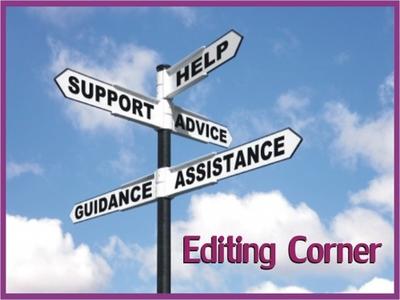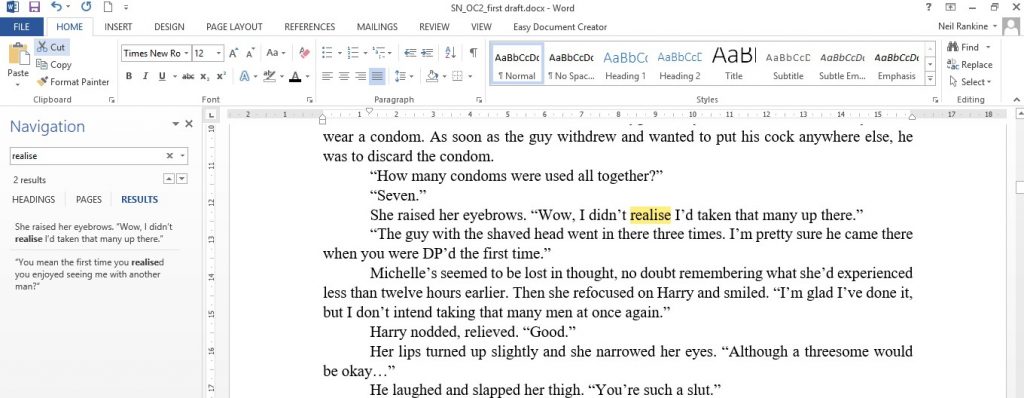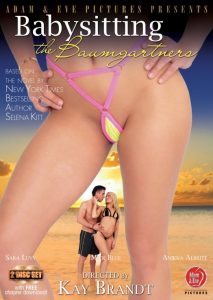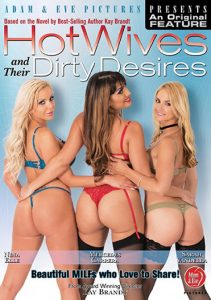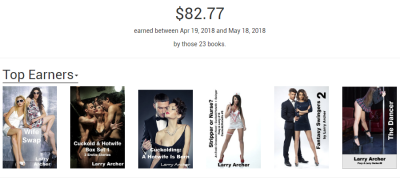 I encountered a problem with my cloud storage that I’d like to warn you about as it could happen to you. While trying to finish my latest tome, one of my beta readers pointed out an inconsistency in the story. I referenced a scene where one of the guys was previously pegged, yet my “proofer” pointed out that the chapter didn’t exist in the story.
I encountered a problem with my cloud storage that I’d like to warn you about as it could happen to you. While trying to finish my latest tome, one of my beta readers pointed out an inconsistency in the story. I referenced a scene where one of the guys was previously pegged, yet my “proofer” pointed out that the chapter didn’t exist in the story.
I could have sworn that I wrote that chapter as I knew what happened yet going back through the document, I came up blank. WTF? I said, the scene was completely gone? Luckily, my beta-reader is a lot more organized than I am and was able to pull the chapter out of a previous file that I had sent her.
Thankfully, I was able to reinsert the chapter into the story somewhat like Foxy inserted her strap-on into Greg’s ass. Quick thinking by my beta-reader insured that Greg could be able to take another “insertion” by a tag-team of girls. For the uninitiated, “pegging” is when a man is butt-fucked by a woman with a dildo.
But how did this fulfilling scene get lost? Has my computer suddenly gotten its collective brains screwed out? After all, I was writing this on an iFruit computer.
While writing, I often switch between a laptop and a desktop computer depending on where I’m at. Dragging all of the cables, tower, and monitor into the bathroom was raising suspicions among my coworkers especially with the extension cord into the stall. Plus, the fact I kept dropping the mouse into the toilet didn’t help.
My MacBook Air laptop balances on my knees quite easily and allows me to pound out my smut everywhere I go. But how to easily transfer files between my laptop and desktop required some additional software.
I use DropBox cloud based storage as a storage point between computers. Storing the document in DropBox allows the Internet based software to seamlessly transfer the files back and forth between computers.
DropBox stores a copy of your files in the cloud as well as any computer it’s installed on including PC’s, Mac’s, Android, and I assume iPhone’s. When you edit a file, it’s on your local computer and DropBox uploads any changes to its cloud copy.
Whenever another computer is connected to the Internet, DropBox automatically synchronizes the files to insure that the latest copy is transmitted to all other computers.
The most obvious issue occurs when the same file is opened with two different computers. DropBox doesn’t lock files so the user must insure that there is only one copy of an individual file open at any one time.
In most cases, DropBox will detect this and will store “conflicted” copies of the file. Then you have to open the copies and merge the changes to end up with a single file which contains all of the changed and new data.
Preventing this problem is quickly learned and you always remember to close the file before switching computers.
This typically works seamlessly except when it doesn’t. I’ve come to realize there are a few flies in the ointment. First, make sure that you wait long enough for DropBox to upload the changed files before shutting down the computer. This will ensure that the cloud has the latest version.
If you’re going to be using a laptop and are not sure if WiFi is going to be available, fire up the laptop at home and allow DropBox to sync all the files before walking out the door. This way your laptop contains the latest copies of the files.
What I’ve recently figured out is that DropBox automatically limits the upload speed and generally speaking, this option should be cleared. It can take an inordinate amount of time to upload files and my laptops will often go to sleep before the process is finished, which leaves the state of the changed files in limbo.
By unchecking the upload limit, my WiFi uploads occur almost instantly and insure the cloud has the latest copy. While a little bit of an aggravation, being able to edit your smut on the go allows you to be productive when traveling or killing time at Starbucks.
If you are like me and enjoy working on the go, using a cloud storage such as DropBox makes life a lot easier, especially if you follow the rules.



